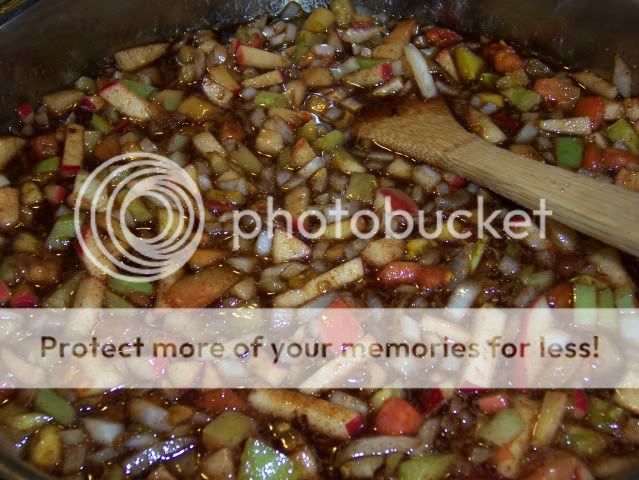
I'd grown 3 beautiful butternut squash this summer.
They were sitting on my counter just waiting to be eaten.
They were sitting on my counter just waiting to be eaten.
If you’re in a hurry perhaps you keep some good quality commercial soup around. I do. My favorite is found in the brown bag in the supermarket’s Italian section, called Alessi Traditional. And my favorites among them are Zuppa Toscana – Tuscan White Bean – and Pasta Fazool, which is what it sounds like (even if not spelled correctly) – Neopolitan Bean Soup. Just add water and cook. I cook them longer than the directions say, because it’s all dehydrated and the veggies tend to stay too toothy without longer cooking. (Be warned, however, if you’re bothered by MSG these soups are not for you. And no, truth-in-lending, I am not paid by this company.)
A steaming hot bowl of well-flavored soup – you really can’t go wrong. But lots of times, I hesitate ever to say always, that wafting bowl of soup is only finished after the fact, with what is put on top – a glug of good olive oil, say, some grated cheese, croutons – those are what bring completed pleasure to your mouth and brain. Alessi reminds you to top each bowl with olive oil and parm. It makes all the difference.
I suspected that might be true of the creamy butternut squash/ginger soup served at the Twilight in the Meadow Do that I wrote about a while ago. It was a wonderful soup in itself, but the tiny brunoise (very regular, very tiny dice) of apples and chopped parsley that topped it simply scored it immense points in my mind. Genius – creamy, slightly sweet, earthy squash vs the sharply sweet, crisp tang of apple. Mmmm Mmm.
I figured I knew how to make the soup itself, but just to be sure I called the chef who made it. Good thing I did, too, for I'd forgotten the ginger. (I won’t mention her name again because I talked about her a bit in my last column, and Randal talked about her in-depth in his, suffice it to say her initials are S.H. and her catering and take-out business in Middletown Springs is called Sissy’s).
She told me the soup started out with sautéing onion and ginger and then adding peeled and chunked butternut squash with a little cider and simmering until tender; pureeing that mixture, and thinning with cream. “Oh,” she said, “I flavor it with a little cinnamon, cloves, allspice.”
Do you use a lot of ginger, I asked? Yes, she did.
And that brunoise, I said, is it just apples?
“And a little parsley,” she said.
So I set to work, and here’s what I did.

For peeling a butternut squash or anything else, I love my Victorinox peeler.
I think my friend Carol Ann gave it to me decades ago. Thank you, Carol Ann.
I think my friend Carol Ann gave it to me decades ago. Thank you, Carol Ann.
Butternut Squash & Ginger Soup
adapted from S.H. with gratitude
adapted from S.H. with gratitude
- 2 tablespoons olive oil
- 2 tablespoons butter
- 1 medium onion, chopped carelessly
- 2 tablespoons (or more) of grated ginger (see photo below)
- 1 large butternut squash
- 1 teaspoon salt
- ½ teaspoon cinnamon
- ¼ teaspoon cloves (I didn’t have any allspice, at least that I’d labeled, so I omitted it)
- 3/4 cup apple cider (Neither did I have cider so I used a combination of 3/4 cup chicken broth and 1/4 cup cider vinegar)
- Thin cream -- about half a cup per serving
- 1 firm, large apple
- 4 tablespoons chopped parsley
Peel a butternut squash, slice it in half, seed it, and cut it in chunks.
When the onions are tender, add the squash, salt, cinnamon, cloves, and cider (or broth and vinegar).
Stir, cover, and turn the heat to medium until it comes to a bubbling little simmer. Keep it there or turn slightly lower and cook until the squash is very tender.
Puree the mixture. An immersion blender is best for this – the mixture is too dry to use a regular blender, a food processor will chop it instead of pureeing it. You could use a food mill or a chinoise, but I think you’d save out the onion. Which probably wouldn’t matter, since it would be only the fiber, not the flavor, that is saved out.
Problems, problems. Since I was cooking for two, I didn’t want to add enough cream to thin the whole mixture because I was going to save half of it for use later, and would add the cream to that leftover portion just before serving it.
So, if you don’t have an immersion blender, you could put half the squash mixture in a regular blender and add enough cream to thin it, and puree it that way.
The apple brunoise: It’s difficult to make tiny squares out of a round object. I did my best, but my admiration grew for whomever made that beautiful tiny apple brunoise for the Twilight in the Meadow dinner for one hundred people! Must’ve taken one person all day to do that. My brunoise was rather uneven, but once I mixed it with chopped parsley and spooned it over the top of the soup it tasted just as good.
So, pour the thinned puree back into the pan and place over low heat until steaming. Ladle into bowls and place a tablespoon or so of the apple brunoise in the center of each bowl.
Eat!
Hmm. Did I start out by saying there was nothing difficult about soups? Mep! Little problems. You’ll figure them out. It’ll be worth it. Still a very easy dinner. Or breakfast!












